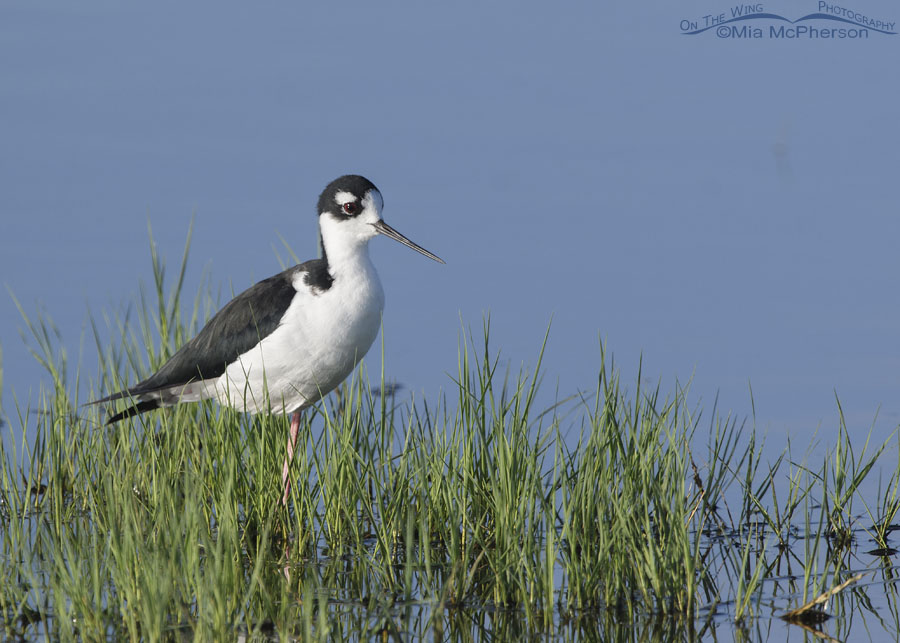Plus Why Utahns Need To Be Watchful Too.
One year ago today, I photographed this male Black-necked Stilt from the north side of the auto tour route at Bear River Migratory Bird Refuge. I had a fantastic morning at the refuge.
 Watchful male Black-necked Stilt – Nikon D500, f7.1, 1/1000, ISO 500, +0.7 EV, Nikkor 500mm VR with 1.4x TC, natural light
Watchful male Black-necked Stilt – Nikon D500, f7.1, 1/1000, ISO 500, +0.7 EV, Nikkor 500mm VR with 1.4x TC, natural light
The sky was clear, the sun was shining, there were plenty of birds in my viewfinder, and I took a leisurely drive around the auto tour route. I have never liked to feel rushed when I am out photographing birds and soaking up nature.
You might be wondering why I included the word “watchful” in my title. Well, there were two young stilts that this male was carefully observing, so it’s quite safe to assume that they were his offspring. The male Black-necked Stilt did call out with alarm when a Greater Yellowlegs flew into the area. Not long after the yellowlegs landed, he went back to simply being watchful.
Right now, the shorebirds that nested and hatched at Bear River MBR are getting ready for fall migration. Some of the other shorebirds that nested farther north are using the wetlands at the refuge as a refueling stop along their migration path.
There is ample water this year because we had plenty of snow last winter but that isn’t always the case. In fact, Utah has been in a mega-drought for decades.
There is a proposal for subsidizing an agricultural exporter in the Bear River basin that consumes 67.5 billion gallons of water each year in the production of 140,000 tons of hay exported internationally.
Yeah, 67.5 billion gallons of water that wouldn’t reach the refuge or the Great Salt Lake.
Most Utah politicians, from the county levels up to the halls of Capitol Hill, do not prioritize the well-being of nature, wildlife, or people when making plans for the future. I guess it is really hard for them to see what they are doing with all that cranial rectal inversion going on. Vote them out when you can.
Mia
Click here to see more of my Black-necked Stilt photos plus facts and information about this species.


Cool shot. I’m only familiar with Black-necked Stilts because of your marvelous posts. Thanks Mia.
Your narrative today is downright scary. I’m not much of a fan of lawyers except when it comes to the environment. In which case I’m all in. Something has to be done to stop these predatory developers and the politicians that enable them. In my mind they they are every bit as destructive as the lovely Vladimir Putin. A bit melodramatic perhaps, but you get my point. I don’t think Congress has the strength of character to meaningfully deal with the problem. Admittedly, it is complex. It is also discouraging.
It never, ever stops. The state swears that alfalfa doesn’t use that much water and is ecologically fine. It beggars belief.
HOW I hope that dangerous and short-sighted proposal doesn’t come to fruition. Sadly it probably would here. I despair.
It is sad many people in Utah have the belief that god created the world and it’s creatures for the use of humans. Antiquated thinking. We need to stop selling our state to the highest bidder for development and unsustainable use! I guess we will need to take the same approach as in Africa, educating our local land owners, developers, and politicians that our wildlife and wild spaces bring in tourism dollars to see our natural wonders and animals. It is a valued commodity for income. Stop destroying it, develop the wild spaces and the tourists will come for wildlife.
I love that! Cranial Rectal Inversion! My new catchphrase. It’s in Canada as well! And as for lawsuits? They’d weasel out of them somehow & blame it on the people. Love the photo, by the way.
Cranial rectal inversion! Wow! I have to use that! As for wetlands maybe those politicians need to be reminded that draining wetlands for agriculture while permitting more fossil fuel emissions was what made Maui a tinderbox ready to be ignited by the least spark. Are they ready for class action lawsuits against them for dereliction of duty for ignoring that?
Granny Pat, I hope multiple lawsuits will be filed against this proposal and the one sticking a polluting inland port right next to Bear River MBR.